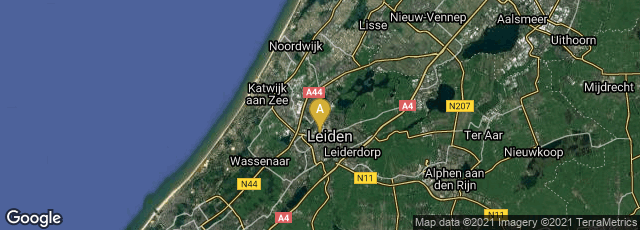

A: Leiden, Zuid-Holland, Netherlands
In 1662 René Descartes published De homine figuris. . . in Leiden. He had written the manuscript in French, originally intending it to accompany his Discours de la méthode (1637) but suppressed it after the condemnation of Galileo in 1633, fearing that his mechanistic view of the human body might be considered heretical. The physician Florentius Schuyl translated Descartes' text into Latin. The Latin edition included 10 engraved plates, including a "dissected" plate of the heart with the interior parts shown by means of lift-up flaps, plus engraved and woodcut text illustrations. Two years later the book first appeared in French in an edition published in Paris, with different illustrations.
De homine was the first attempt to cover the whole field of "animal physiology." It was based upon Descartes's concept of "l'homme machine," an automaton constructed by God to approximate real men as closely as possible. By using this literary device Descartes was able to avoid the restrictions and encumbrances of traditional physiology and theology, and to explain all physical motions, except for deliberately wilful, rational or self-conscious behavior, in purely mechanical terms. The work is particularly noteworthy for containing "the first descriptive statement of involuntary action which bears a recognizable resemblance to the modern concept of reflex action." Descartes had first used the word "reflex" in a neurophysiological sense in Les passions de l'âme (1649).
J. Norman (ed.) Morton's Medical Bibliography (1991) no. 574. Hook & Norman, The Haskell F. Norman Library of Science and Medicine (1991) no. 627.